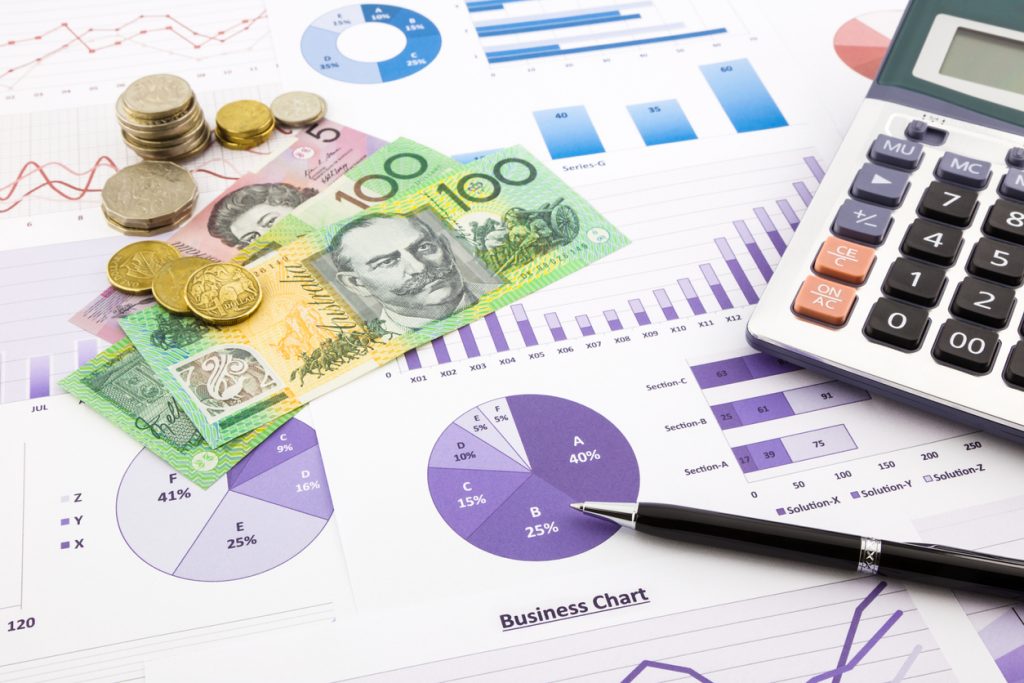
We had a big response to our last article on how your investments interact with the Age Pension. That discussed how they can combine to deliver your retirement income. Our readers have identified investing in super and other investments as one of the areas where they would most like some help; so, this week we’ll delve into how your investments matter.
In retirement there are some levers you control and some you don’t. Some areas where you can exercise significant choice and others where you can’t. The Age Pension is where you basically have no choice but to follow the rules, but you have a lot of flexibility in your super and other investments.
And what a difference the way you invest can make! The simplest way to illustrate that is to show the gap between a very conservative investment earning a low return and a high return (with higher risk) investment.
Let’s take the last 10 years. It’s been a very good period for people who are comfortable with growth investments like shares and property. But a very poor period for those who like the comfort of the conservative vehicles like bank deposits.
A $100,000 investment in Australian shares at the start of the period grew to $254,000 over 10 years (a 9.76% increase p.a.), while a cash investment grew to only $124,000 (2.15% increase p.a.). That’s a big gap – $130,000 – more than the starting investment (1).
What difference can your investment approach make to your spending power?
How did that parlay into retirement income? Investment returns and investment capital drawdowns combine with the Age Pension, if you get it, to effectively create what you might call your “retirement salary.” As we saw last week, the interaction with the Age Pension matters.
For someone on the full Age Pension we estimate that a single person with $200,000 in investments, (let’s say a super pension) at the beginning could have spent at a rate of $38,400 per year over a 30 year period at an 8% return but only at a rate of $31,300 per year if they were invested in cash earning 2% (2).
For a part-pensioner the assets test can reduce the added benefit from the extra return a little, as the amount of pension may be reduced, but the higher returns still matter. So, a part pensioner with $550,000 in assets at the beginning of retirement earning 8% could spend $52,100 over 30 years, while another part pensioner with the same assets invested in low earning assets (2%) could spend $38,400 per year (3).
This isn’t to say investing in cash is wrong. In order to earn higher returns you do need to take on more risk and not everyone is comfortable with this. Many people value the peace of mind that comes with the greater level of certainty that cash provides. This peace of mind though often comes at a cost as the difference in spending power examples above show. Its a basic risk return trade-off that everyone needs to be comfortable with
But, we don’t know what the future holds
There are two great uncertainties about retirement income:
- we don’t know how long we’re going to live (and need our retirement income) and
- we don’t know what investments will do.
So, the example above is all well and good at looking at the past. But it’s the future that matters: what will investments do when we’re investing for our ongoing retirement? When fund managers say “past performance is no guarantee of future returns,” they mean it.
What will happen in the short term is particularly uncertain, particularly when it comes to share markets. They go up and down on a daily basis that is very hard to predict. We may know a bit more about the medium and long-term prospects as the longer term tends to smooth out the daily fluctuations.
That’s why our Retirement Income and Spending calculator takes into account hundreds of scenarios to help you with your “what if” thinking. What if investment markets are poor instead of good? What if markets are average?
You can’t approach retirement planning with an assumed rate of return over 30 years – no one knows. We have to be prepared for whatever might come. That means preparing for different scenarios.
Now, many people think that means being mostly in cash; they think that’s safe. But with cash investments earning 1% or less at the moment and the prospect of inflation constantly eating away at the balance, what’s safe about cash? How’s it going to help you earn a retirement income that keeps up with inflation?
The approach some people take is to hold diversified investments, including a mix of Australian shares, international shares, fixed income and cash, maybe property too. A diversified portfolio – selected to match your own risk tolerance (Conservative, Balanced, Growth, High Growth) – is likely to be more suitable for most retirees, over time, than a bank account. If you have money in super, or in a super pension all these options will typically be available for you. A mix of shares for growth and fixed income and cash for relative stability is what many financial planners recommend.
It’s an area where you should get personal advice however as factors such as your risk tolerance, time horizons and need for access to ready cash will all need to be considered.
Investments can make a big contribution to your retirement. We’ll be talking more about their role in the months ahead. You can let us know what you think by commenting below.
If you want to check what you might, or should, be eligible to receive in age pension or health card entitlements you can do so by clicking here
This article is provided by Retirement Essentials Representative Number: 001260855. We are an authorised representative of SuperEd Pty Ltd ABN 88 118 480 907 AFSL #468859. This information is not intended as financial product advice, legal advice or taxation advice. It does not take into account your personal situation, goals or needs and you should assess your own financial situation, consider if the information is suitable for you and ensure you read any relevant Product Disclosure Statement (PDS) if you choose to make any changes to your financial situation. It is always advisable to consult a financial adviser before making financial decisions.
Notes
1: Australian shares return for S&P ASX 300 Index and cash return for Bloomberg AusBond Bank Bill Index
2 & 3: Calculated using the ASIC MoneySmart retirement calculator






How can I get access to previous blog posts?
Hi Bill, thanks for your interest in our blogs. You will find all our blog posts here. You can also search by topic on the RHS of this page
Very informative
Save all your life and either way it will be taken from us, either by a market crash, low interest or inflation. The world sucks!
AGREE 100%
It will be beneficial to lot of retirees if your organisation can provide
the expert advice how to invest the savings to maximise the outcome for each individual.
I’m in a slightly different scenario to the examples you provide, I turn 65 this month and retired about 18 Months ago. I have a Defined Benefits Pension of approx. $41,100, I have invested in a super account and it is sitting at approx. $240,000 and still in the accumulation phase and I have $30,000 cash at hand. I’m in a defacto relationship with an American lady who has just been granted Australian Residency, she is receiving an American social security disability pension and a legacy pension from her deceased husband (As far as I understand this is from a pension similar to a Defined Benefit IE: 5/8ths of his pension) I think this is around $60,000 AUD (We don’t discuss our financial situation). Is there anywhere I can seek advice what entitlements I will receive when I reach the Old Age Pension age of 66.5?
Hi Gary, thank you for reaching out for further assistance. We will send you an email separate to this comment with details on how we can potentially help via a phone consultation.
Hello, I have just retired and need advise as to apply for the aged pension. We have combined super of $706k and own our home. Our assets including cars and cash are about $80k. We have an investment property we paid $480k for , which is interest only and with the lock down and tenant unable to pay full rent the mortgage is now $496K. We don’t know the current value of the investment property but sales in the same block of apartments has been around $430k for a similar property. Can you assist with what we need do
Regards Kevin & Brenda
Hi Kevin, thank you for reaching out for further assistance. We will send you an email separate to this comment with details on how we can potentially help via a phone consultation.